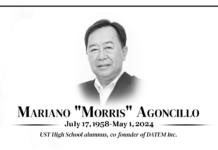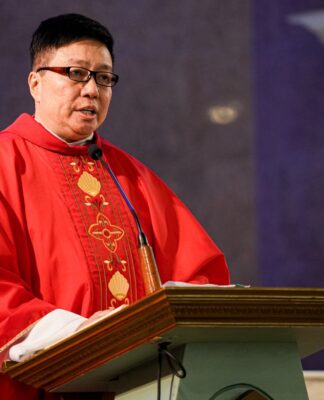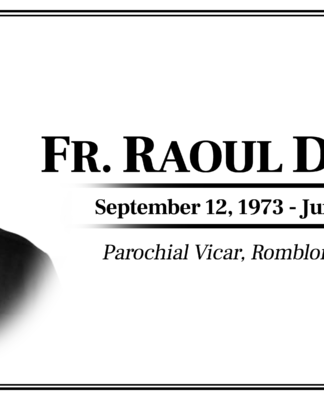TO REBUILD from ruins is a tough task. The Varsitarian experienced this after the Second World War.
During the war, the University became a huge concentration camp for Japanese prisoners of war. In that interval, the paper ceased publication.
According to National Artist for Literature Francisco Sionil Jose, Varsitarian editor in chief from 1948 to 1949, the war was a learning experience.
“All Varsitarian staffers during the 40’s had an experience of the war. That contributed a lot to our maturity,” he said.
That maturity, according to him, was complemented by hard work and perseverance because the old times offered no help from technology unlike the present times.
“We worked in the press, our hands became dirty, we laid out the newspaper and magazine ourselves.”
Most of the staffers during this decade came from the Faculty of Philosophy and Letters although there were also some writers from Medicine, Law, and the other colleges.
The first post-war paper came out on November 12, 1945, which triggered a chain of literary-oriented issues. This period showcased the literary skills of the Varsitarian staffers, headed by Jose.
“Jose suggested that the literary section should be separated from the news section,” said Gloria Garchitorena Goloy, a former Varsitarian literary editor. “Kasi iyong mga poems, nakasingit sa news pages. Major influence din ang Varsitarian in the administration’s decision to sponsor a University-wide literary contest. That tradition made the Varsitarian a breeding ground for poets and literary writers,” she said. Goloy was the country’s first women’s magazine editors.
What made the 40’s different from the previous and the succeeding decades was the establishment of the Varsitarian Magazine, which gave space to literary works as well as student contributions.
According to Mrs. Goloy, Teodoro Benigno never became a Varsitarian staffer but was a regular contributor during the 40’s.
The Varsitarian Magazine was a major hit. It had a wider readership than the regular issues.
“Mabenta iyan, primarily because it was something new and it was handy. And the student contributors got to see their names on print,” Goloy said with a laugh.
It is interesting to note that Thomasians during the 40’s were more enthusiastic about the paper’s release compared to the students of today.
“Kaya nga alam mo kapag magdi-distribute na ng Varsitarian, ang daming tao sa Main Building. Mabili talaga, lalo na iyong magazine,” she said.
The issues during that time were distributed to the students from a cubicle at the right wing of the Main Building. The cubicle served as the Varsitarian’s office, which was equipped with desks and typewriters.
Mrs. Goloy also said that the post war era was an exciting time for the Varsitarian staff because of the influx of Thomasian achievers. The end of the Japanese occupation opened the doors of the University to a huge number of intelligent and talented students. In the 40’s, the Varsitarian came up with a lot of feature articles about these achievers.
The Varsitarian staffers of the 40’s produced two National Artists, namely Jose and visual artist J. Elizalde Navarro. Mrs. Goloy highlighted the names of Manuel Salak, Felix Bautista, Celso Carunungan, Juan Frivaldo, Constante Roldan, Mike Evangelista, Theodore Owen, Delia Coronel, Julia Palarca, Nita Umali-Berthelsen and Eugenia Duran Apostol, as those who excelled in their respective fields after their stint with the Varsitarian.

















